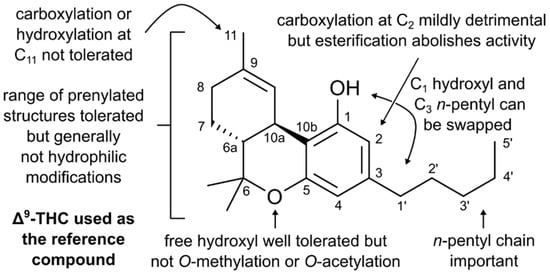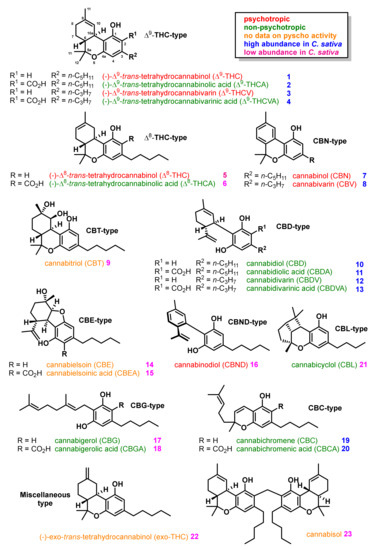 “Hemp (Cannabis sativa L.) is currently one of the most controversial and promising crops. This study compared nine wild hemp (C. sativa spp. spontanea V.) accessions with 13 registered cultivars, eight breeding lines, and one cannabidiol (CBD) hemp strain belonging to C. sativa L.
“Hemp (Cannabis sativa L.) is currently one of the most controversial and promising crops. This study compared nine wild hemp (C. sativa spp. spontanea V.) accessions with 13 registered cultivars, eight breeding lines, and one cannabidiol (CBD) hemp strain belonging to C. sativa L.
The first three groups had similar main essential oil (EO) constituents, but in different concentrations; the CBD hemp had a different EO profile. The concentration of the four major constituents in the industrial hemp lines and wild hemp accessions varied as follows: β-caryophyllene 11-22% and 15.4-29.6%; α-humulene 4.4-7.6% and 5.3-11.9%; caryophyllene oxide 8.6-13.7% and 0.2-31.2%; and humulene epoxide 2, 2.3-5.6% and 1.2-9.5%, respectively.
The concentration of CBD in the EO of wild hemp varied from 6.9 to 52.4% of the total oil while CBD in the EO of the registered cultivars varied from 7.1 to 25%; CBD in the EO of the breeding lines and in the CBD strain varied from 6.4 to 25% and 7.4 to 8.8%, respectively. The concentrations of δ9-tetrahydrocannabinol (THC) in the EO of the three groups of hemp were significantly different, with the highest concentration being 3.5%.
The EO of wild hemp had greater antimicrobial activity compared with the EO of registered cultivars.
This is the first report to show that significant amounts of CBD could be accumulated in the EO of wild and registered cultivars of hemp following hydro-distillation. The amount of CBD in the EO can be greater than that in the EO of the USA strain used for commercial production of CBD. Furthermore, this is among the first reports that show greater antimicrobial activity of the EO of wild hemp vs. the EO of registered cultivars.
The results suggest that wild hemp may offer an excellent opportunity for future breeding and the selection of cultivars with a desirable composition of the EO and possibly CBD-rich EO production.”

 “The purpose of this study was to evaluate the antioxidant and antimicrobial properties of two extracts from a new Chinese accession (G-309) of Cannabis sativa L. (Δ9 -tetrahydrocannabinol <0.2%) with high content of propyl side chain phytocannabinoids.
“The purpose of this study was to evaluate the antioxidant and antimicrobial properties of two extracts from a new Chinese accession (G-309) of Cannabis sativa L. (Δ9 -tetrahydrocannabinol <0.2%) with high content of propyl side chain phytocannabinoids. “In the present study, the antimicrobial effect of Cannabis sativa Futura 75 was evaluated both in vitro against foodborne bacterial pathogens, and on food against naturally occurring microbial groups of minced meat stored for 8 days at 4°C.
“In the present study, the antimicrobial effect of Cannabis sativa Futura 75 was evaluated both in vitro against foodborne bacterial pathogens, and on food against naturally occurring microbial groups of minced meat stored for 8 days at 4°C. “Staphylococcal enterotoxin B (SEB) is a potent activator of Vβ8+T-cells resulting in the clonal expansion of ∼30% of the T-cell pool. Consequently, this leads to the release of inflammatory cytokines, toxic shock, and eventually death.
“Staphylococcal enterotoxin B (SEB) is a potent activator of Vβ8+T-cells resulting in the clonal expansion of ∼30% of the T-cell pool. Consequently, this leads to the release of inflammatory cytokines, toxic shock, and eventually death. “Staphylococcal enterotoxin‐B (SEB) is one of the most potent bacterial superantigens that exerts profound toxic effects by inducing cytokine storm. When SEB is inhaled, it can cause Acute Respiratory Distress Syndrome (ARDS), which is often fatal and currently there are no effective treatment modalities.
“Staphylococcal enterotoxin‐B (SEB) is one of the most potent bacterial superantigens that exerts profound toxic effects by inducing cytokine storm. When SEB is inhaled, it can cause Acute Respiratory Distress Syndrome (ARDS), which is often fatal and currently there are no effective treatment modalities. “Acute Respiratory Distress Syndrome (ARDS) causes up to 40% mortality in humans and is difficult to treat. ARDS is also one of the major triggers of mortality associated with coronavirus-induced disease (COVID-19). We used a mouse model of ARDS induced by Staphylococcal enterotoxin B (SEB), which triggers 100% mortality, to investigate the mechanisms through which Δ9-tetrahydrocannabinol (THC) attenuates ARDS.
“Acute Respiratory Distress Syndrome (ARDS) causes up to 40% mortality in humans and is difficult to treat. ARDS is also one of the major triggers of mortality associated with coronavirus-induced disease (COVID-19). We used a mouse model of ARDS induced by Staphylococcal enterotoxin B (SEB), which triggers 100% mortality, to investigate the mechanisms through which Δ9-tetrahydrocannabinol (THC) attenuates ARDS. “In the present work, Cannabis sativa L. cv Futura 75 inflorescences, cultivated in the Abruzzo territory, were characterized for their volatile fraction through SPME-GC-MS. In addition, the essential oil extracted from these inflorescences was investigated for the antioxidant potentialities and for the terpenic profile.
“In the present work, Cannabis sativa L. cv Futura 75 inflorescences, cultivated in the Abruzzo territory, were characterized for their volatile fraction through SPME-GC-MS. In addition, the essential oil extracted from these inflorescences was investigated for the antioxidant potentialities and for the terpenic profile.
 “Methicillin-resistant Staphylococcus aureus (MRSA) has proven to be an imminent threat to public health, intensifying the need for novel therapeutics.
“Methicillin-resistant Staphylococcus aureus (MRSA) has proven to be an imminent threat to public health, intensifying the need for novel therapeutics.
